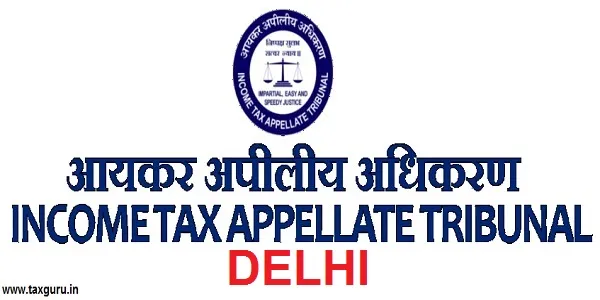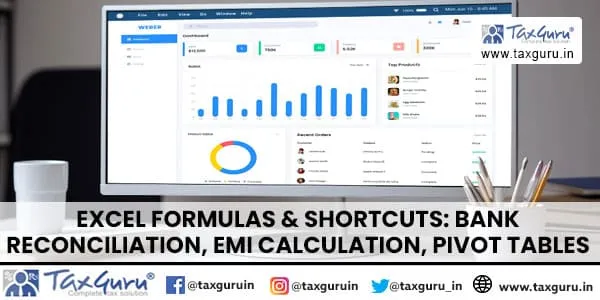Case Law Details
IN THE ITAT MUMBAI BENCH ‘E’
Suresh Industries (P.) Ltd.
Versus
Assistant Commissioner of Income-tax
IT Appeal No. 5374 (Mum.) of 2011
[Assessment year 2007-08]
October 10, 2012
ORDER
N.K. Billaiya, Accountant Member
This appeal by the assessee is directed against the order of Ld. CIT(A)-13, Mumbai dt. 7.4.2011 pertaining to assessment year 2007-08.
2. The assessee has raised two substantive grounds of appeal as under:
“1. The Ld. CIT(A) has erred in law and on the facts of the case in confirming the action of the AO in not allowing current year’s depreciation of Rs. 2,32,059/- while determining the Business loss. The action is unjustified and unwarranted and against the provisions of Sec. 32(1) of the I.T. Act.
2. The Ld. CIT(A) has erred in law and on the facts of the case in confirming the action of the AO in not allowing set off of unabsorbed loss of Rs. 6,42,208/- against the current year’s Long Term Capital Gain. The action is unjustified and unwarranted.”
3. The sum and substance of the above mentioned grievance of the assessee suggests that (a) the Ld. CIT(A) should have allowed current year’s depreciation at Rs. 2,32,059/- as set off from the capital gains and (b) the unabsorbed depreciation brought forward from the earlier year’s at Rs. 6,42,208/- should have also been allowed as set off against current year’s Long Term Capital Gain.
4. The facts giving rise to the grievance of the assessee show that for the year under consideration, during the course of the assessment proceedings, the Assessing Officer observed that the assessee company had incurred loss of Rs. 17,48,195/-. The assessee company also had a Long Term capital gains to the tune of Rs. 1,30,00,000/-. The assessee claimed set off of business loss from Long Term capital gains. This fact is not in dispute. What has been questioned by the AO is the set off claimed by the assessee of Current year’s depreciation at Rs. 2,32,059/- at the brought forward depreciation at Rs. 6,432,20/-. The AO sought explanation from the assessee for its claim of set off of current year’s and brought forward depreciation. The assessee filed a detailed reply to substantiate its claim. The claim of the assessee was rejected by the AO as the AO was of the opinion that the set off of current year’s business loss against the income under the other heads of income does not include unabsorbed depreciation as it is not a part of business loss. The AO further observed that Sec. 32(2) restricts the allowable depreciation of the current year only to the extent of profits and gains of business. The other reason for rejecting assessee’s claim was that the Act treats business loss separately from the depreciation because business loss can be carried forward only for 8 assessment years whereas depreciation can be carried forward for unlimited period. While rejecting the claim of set off of depreciation in totality, the AO concluded that the assessee has not claimed the amount in return and also no revised return was filed. The AO completed the assessment after disallowing the claim of the assessee for set off of current year’s depreciation as well as brought forward depreciation.
5. The assessee agitated the matter before the Ld. CIT(A) but without any success. The Ld. CIT(A) considered the provisions of I.T. Act 1922 vis-à-vis 1961 Act. The sum and substance for rejecting the assessee’s appeal as enumerated by the Ld. CIT(A) in his order suggests that the Ld. CIT(A) was of the opinion that the set off can be claimed only from profits or gains and profits or gains are specifically confined to profits and gains of business only. The Ld. CIT(A) also distinguished the facts of the assessee’s case with those of (a) CIT v. Jaipuria China Clay Mines (P.) Ltd. [1966] 59 ITR 555 (SC) (b) Rajapalayam Mills Ltd. v. CIT [1978] 115 ITR 777 (SC) and (c) CIT v. Virmani Indus. (P.) Ltd. [1995] 216 ITR 607/83 Taxman 343 (SC). The Ld. CIT(A) held that the current years’ depreciation is not allowed to be set off against the income under the head Long Term capital gains. Further the claim of the assessee for allowing the unabsorbed depreciation of earlier year’s was also not allowed for the reason that the assessee has not claimed in its computation of income while filing the return.
6. The assessee is aggrieved by this finding of the Ld. CIT(A) and is before us. The Ld. Counsel for the assessee submitted that the assessee is a private limited company engaged in the business of manufacturing automotive parts such as gear cover, hand chain wheel, round washer etc. The Ld. Counsel further submitted that the assessee company filed a return of income claiming business loss as well as current year’s depreciation to be allowed as set off against the Long Term capital gains. The Ld. Counsel further pointed out that the assessee company has also unabsorbed depreciation of Rs. 6,42,208/- of earlier years . The Counsel strongly objected to the observation of the lower authorities that assessee has not shown /claimed unabsorbed depreciation brought forward in its return of income. To substantiate, the Ld. Counsel drew our attention to pages 1 & 2 of the Paper Book which are the statement of income for the year under consideration. The Ld. Counsel continued arguing that the assessee has filed profit and loss account and balance sheet and has claimed current year’s depreciation at Rs. 2,32,059/-. It is the contention of the Ld. Counsel for the assessee that though the AO has accepted the figure of business loss but has denied current year’s depreciation to be set off against the profit under the head Long Term capital gains. The Ld. Counsel further pointed out that a copy of the depreciation statement was filed along with Tax Audit Report and therefore the depreciation was legally allowable as per the provisions of Sec. 32(1) of the Act as part of the business loss. The Ld. Counsel further drew our attention to the provisions of Sec. 32(2) of the Act which provides that the unabsorbed depreciation is deemed to be merged with current year’s depreciation and accordingly the assessee company is entitled to set off of unabsorbed depreciation relating to earlier assessment year’s with the income under the head Long Term capital gains. The Ld. Counsel concluded that the assessee’s claim of set off of current year’s as well as brought forward depreciation is as per the provisions of law and should be allowed to be set off against the income under the head Long Term capital gains.
7. Per contra, Ld. Departmental Representative strongly relied upon the findings of the lower authorities.
8. We have heard the rival submissions and perused the orders of the lower authorities and have carefully considered the relevant provisions of the Act and the Paper Book submitted by the assessee. A perusal of the statement of income for the year under consideration show that the assessee has shown Long Term capital gains at Rs. 1,30,00,000/- after claiming exemption u/s. 54EC of the Act. The assessee has also shown net loss from business before depreciation at Rs. 17,48,195/-. To this, the assessee added current year’s depreciation at Rs. 2,32,059/- and unabsorbed depreciation brought forward from assessment years 1999-2000 and 2002-03 at Rs. 6,42,208/- and claimed set off amounting to Rs. 26,22,462/- from the Long Term capital gains at Rs. 1,30,00,000/-. Profit and gains of business or profession are computed in accordance with the provisions contained in Sec. 30 to 43 of the Act. Depreciation is allowed as per the provisions of Sec. 32(1) of the Act. Section 32(2) of the Act contains provisions relating to unabsorbed depreciation which is as under:
“Where, in the assessment of the assessee, full effect cannot be given to any allowance under sub-section (1) in any previous year, owing to there being no profits or gains chargeable for that previous year, or owing to the profits or gains chargeable being less than the allowance, then, subject to the provisions of sub-section (2) of section 72 and sub-section (3) of section 73, the allowance or the part of the allowance to which effect has not been given, as the case may be, shall be added to the amount of the allowance for depreciation for the following previous year and deemed to be part of that allowance, or if there is no such allowance for that previous year, be deemed to be the allowance for that previous year, and so on for the succeeding previous years.]
9. A perusal of the aforementioned section shows that Sec. 32(2) has been subjected to the provisions of Sec. 72(2) and 73(3) of the Act. Before discussing the provisions of Sec. 72(2) let us first analyze the provisions of Sec. 32(2) of the Act prior to this amendment w.e.f. 1.4.2002
“Substituted by the Finance Act, 2001, w.e.f. 1-4-2002. Prior to its substitution, sub-section (2), as amended by the Taxation Laws (Amendment and Miscellaneous Provisions) Act, 1986, w.e.f. 1-4-1988, Direct Tax Laws (Amendment) Act, 1987, w.e.f. 1-4-1989 and Finance Act, 1992, w.e.f. 1-4-1993, substituted by the Finance (No. 2) Act, 1996, w.e.f. 1-4-1997 and further amended by the Finance Act, 2000, w.e.f. 1-4-2001, read as under :
‘(2) Where in the assessment of the assessee full effect cannot be given to any allowance under clause (ii) of sub-section (1) in any previous year owing to there being no profits or gains chargeable for that previous year or owing to the profits or gains being less than the allowance, then, the allowance or the part of allowance to which effect has not been given (hereinafter referred to as unabsorbed depreciation allowance), as the case may be,—
(i) shall be set off against the profits and gains, if any, of any business or profession carried on by him and assessable for that assessment year ;
(ii) if the unabsorbed depreciation allowance cannot be wholly set off under clause (i), the amount not so set off shall be set off from the income under any other head, if any, assessable for that assessment year;
(iii) if the unabsorbed depreciation allowance cannot be wholly set off under clause (i) and clause (ii), the amount of allowance not so set off shall be carried forward to the following assessment year and—
(a) it shall be set off against the profits and gains, if any, of any business or profession carried on by him and assessable for that assessment year ;
(b) if the unabsorbed depreciation allowance cannot be wholly so set off, the amount of unabsorbed depreciation allowance not so set off shall be carried forward to the following assessment year not being more than eight assessment years immediately succeeding the assessment year for which the aforesaid allowance was first computed :
Provided that the time limit of eight assessment years specified in sub-clause (b) shall not apply in the case of a company for the assessment year beginning with the assessment year relevant to the previous year in which the said company has become a sick industrial company under sub-section (1) of section 17 of the Sick Industrial Companies (Special Provisions) Act, 1985 (1 of 1986) and ending with the assessment year relevant to the previous year in which the entire net worth of such company becomes equal to or exceeds the accumulated losses.”
10. A comparative study of pre-amendment and post amendment provisions of Sec. 32(2) suggests that prior to the amendment, the set off was restricted to the profits and gains, if any, of any business or profession whereas post amendment (i.e. the law applicable for the year under consideration) the set off is available from profits or gains chargeable for the previous year. The claim of the lower authorities that profits or gains so mentioned should be restricted to profits or gains of business or profession cannot be accepted because had that been the intention of the legislature it would not have deleted phrase “of any business or profession in the post amended provisions of Sec. 32(2). The law regarding set off of unabsorbed depreciation upto 1.4.1996 was very liberal and set off was allowable against any income. This was also upheld by the Hon’ble Supreme Court in the case of Virmani Indus. (P.) Ltd. (supra). However, the law regarding such set off was changed by the Finance Act No. 2 of 1996 and from A.Y. 1997-98 to 2002-03 the unabsorbed depreciation was put at par with business losses u/s. 72. However the status quo have been restored from A.Y. 2003-04 and therefore the ratio laid down by the Hon’ble Supreme Court in the case of Virmani Indus. (P.) Ltd. (supra) once again hold good and so now unabsorbed depreciation can be set off against any income. Thus, the claim of current year’s depreciation of Rs. 2,32,059/- is directed to be set off against the income under the head “Capital gains”. Accordingly, ground No. 1 of the appeal is allowed.
11. Having considered the provisions of Sec. 32(2), it is also clear that if the current year’s depreciation cannot be set off owing to the profits or gains chargeable being less than the allowance, the allowance or the part of the allowance to which effect has not been given shall be added to the amount of allowance for depreciation for the following previous year and deemed to be part of the allowance which means that brought forward depreciation merges with the current year’s depreciation because of the legal fiction created by provisions of Sec. 32(2) of the Act. However, this fiction has been subjected to the provisions of Sec. 72(2) and 73(3) of the Act.
12. Let us first consider the provisions of Sec. 72(2) of the Act which provides as under:
“Whether any allowance or part thereof is, under sub-section 2 of Sec. 32 or sub section (4) of Sec. 35, to be carried forward, effect shall first be given to the provisions of this section.
13. A simple reading of this section suggests that in case of set off of business loss vis-a-vis depreciation, the first preference shall be given to the business loss as per the provisions of Sec. 72(1) of the Act for the simple reason that the business loss can be carried forward only upto 8 assessment years whereas the depreciation can be carried over upto unlimited period. As has been discussed hereinabove, the brought forward unabsorbed depreciation is treated as current years’ depreciation because of the legal fiction, therefore the treatment given to the current year’s depreciation is equally applicable to brought forward depreciation after the application of Finance Act, 2001.
14. We have already held that current year’s depreciation is to be allowed as set off from the Long Term Capital Gains and brought forward depreciation is to be treated as current year’s depreciation as per the legal fiction of section 32(2), the same is also to be allowed to be set off from the Long Term Capital Gains. Accordingly, ground No. 2 of the appeal is also allowed.
15. In the result, the appeal filed by the assessee is allowed.



















